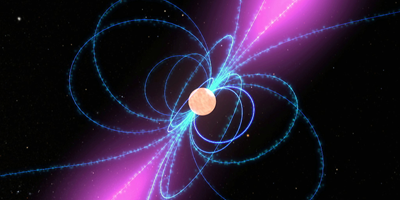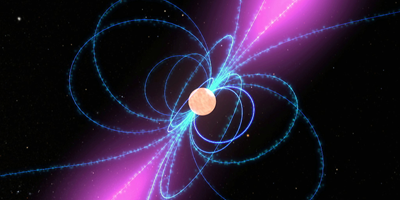A Pulsar’s Inner Secrets
Pulsars are neutron stars that sweep space with beams of radiation much like lighthouses: the periodicity of the pulsar allows us to track the star over its life cycle, as well as nearby gravitational bodies. Gradually, a pulsar spins down as it loses energy, but young pulsars exhibit glitches, in which the rotation rate increases suddenly. The current explanation for the glitches is that the neutron star’s crust contains a neutron superfluid that resists the spin-down effect: when vortices break free from the nuclear lattice and transfer angular momentum to the crust, the pulsar is seen to rotate faster.
Nils Andersson at the University of Southampton, UK, and colleagues, now point out in a paper in Physical Review Letters that this model has a few glitches of its own. Combining the most recent glitch data and a model of the superfluid that takes into account relativistic effects, the authors find that the amount of superfluid in the crust cannot explain the changes in angular momentum required to account for the glitches. In other words, additional contributions to the moment of inertia must be coming from somewhere, most likely the superfluid in the core.
An important ingredient in all of this is the effective neutron mass in the superfluid, which, as pointed out in an earlier paper in Physical Review C by Nicholas Chamel of the Université Libre de Bruxelles, might be very large. Indeed, Chamel considers the implications for pulsar glitches in an independent paper now published in Physical Review Letters, and arrives at similar conclusions: the crust superfluid is not enough to explain the data. – David Voss





